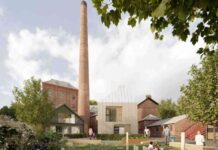Scotland’s Dark History: The Ultimate Clearances in the Woods
A haunting legacy of abandoned homes lies hidden within Scotland’s state forestry, marking what experts describe as the “ultimate clearance” of these once-thriving communities. Douglas MacMillan, a professor in Forestry and Land Use Economics, has uncovered a series of mysterious ruins scattered throughout the Scottish forests, shedding light on a dark chapter in the country’s history.
The “programme of ruination” that MacMillan has identified paints a grim picture of deliberate destruction and neglect that has left these homes in ruins. These deserted buildings, some with trees growing within their walls, stand as eerie reminders of the families and communities that once inhabited these areas before the forests took over.
Exploring the forests near Aberfoyle, MacMillan stumbled upon one of these enigmatic ruins, sparking his interest in uncovering the stories behind these forgotten homes. He has since teamed up with researcher Euan Stevenson to publish a paper titled ‘Ruination on the National Forest Estate 1920-2019’, documenting the lost heritage of these properties.
The ruins that MacMillan and Stevenson have mapped out represent a significant loss of cultural history, with only a fraction of them appearing in official records. The lack of attention given to these properties, both by the authorities and in historical documentation, has created a void in Scotland’s narrative, leaving these ruins shrouded in mystery.
As MacMillan delves deeper into the history of these ruins, he uncovers tales of families forced to abandon their homes, only to see them fall into disrepair or be intentionally destroyed. The pattern of depeopling these areas, he argues, reflects a Germanic forestry approach that prioritized the forests over the people who once called these lands home.
Despite the shift in ownership from the Forestry Commission to Forestry and Land Scotland, questions remain about the fate of these ruins and the communities they once housed. While recent initiatives aimed at protecting and recording these historical remains are a step in the right direction, more needs to be done to preserve Scotland’s lost heritage.
In their paper, MacMillan and Stevenson call on Forestry and Land Scotland to take proactive measures to safeguard these ruins and their surrounding lands from further damage. They advocate for a full survey of the ruined properties, restoration efforts where possible, and community involvement in preserving these historical sites.
The recent purchase of Glenprosen Estate by Forestry and Land Scotland serves as a test of the organization’s commitment to preserving Scotland’s heritage. While promising opportunities for sustainable use of the estate are on the horizon, concerns linger about the fate of other state forest properties and the communities they once supported.
Looking ahead, MacMillan urges a reevaluation of Scotland’s approach to forestry, with a focus on integrating people back into the landscape. Embracing a model similar to Scandinavia, where wood cabins and green forest crofts thrive, could revitalize Scotland’s forests and create a sense of belonging for both people and nature.
In conclusion, Scotland’s dark history of ruination in the woods serves as a poignant reminder of the impact of industrial forestry on communities and heritage. By addressing the legacy of abandoned homes and lost cultural history, Scotland has the opportunity to forge a new path that values both the forests and the people who inhabit them.
































